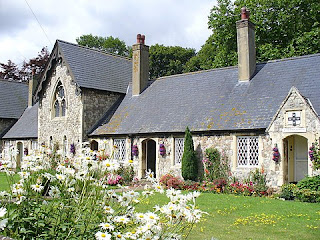He came into his majority in 1188 or 1189, and was knighted. In 1189 he also married Constance, Duchess of Brittany. She had been married to Henry II's son Geoffrey II, who had died in 1186 at 27 years of age. Henry wanted Brittany under his control, so pushed the marriage to one of his vassals. Through this marriage Ranulph also became the Earl of Richmond.
Ranulph styled himself "Duke of Brittany," but he had no real influence there and no one else considered him to be the duke, nor did he spend a lot of time there. When Henry's son Richard was in power, he summoned Constance and her son by Geoffrey, Arthur, to Rouen. Arthur had, however, been quietly taken to the court of Philip II of France, Richard's rival, to be raised with Philip's son Louis VIII. The people of Brittany did not want England dictating their duchess's husband or trying to rule them, especially in absentia. Constance requested a divorce on the grounds of desertion, and got it in 1199.
In 1200 Ranulph married Clemence of Fougères, of a Norman family, to extend his contacts in Normandy. King John was suspicious of him, especially since Ranulph had opposed Prince John's power grab while King Richard was on Crusade, but John overcame concerns about Ranulph by first confiscating his estates and then, after deeming Ranulph had learned his lesson, returning them and showering Ranulph with gifts to further ensure loyalty. Ranulph became a strong supporter of John afterward, supporting him in the First Barons War.
Ranulph was a witness to the signing of the Magna Carta in 1215 and, because he had barons under his earldom, created his own "Magna Carta of Chester" to appease them. (Magna Carta dd not apply to the earldom of Chester, which was a separate feudal domain.)
There was a lot of fighting to come, even after Magna Carta, and I'll go into that and Ranulph's death and his burial in three separate places, but ponder this question between now and next time: how was he either the 4th or the 6th earl?
See you here tomorrow.




